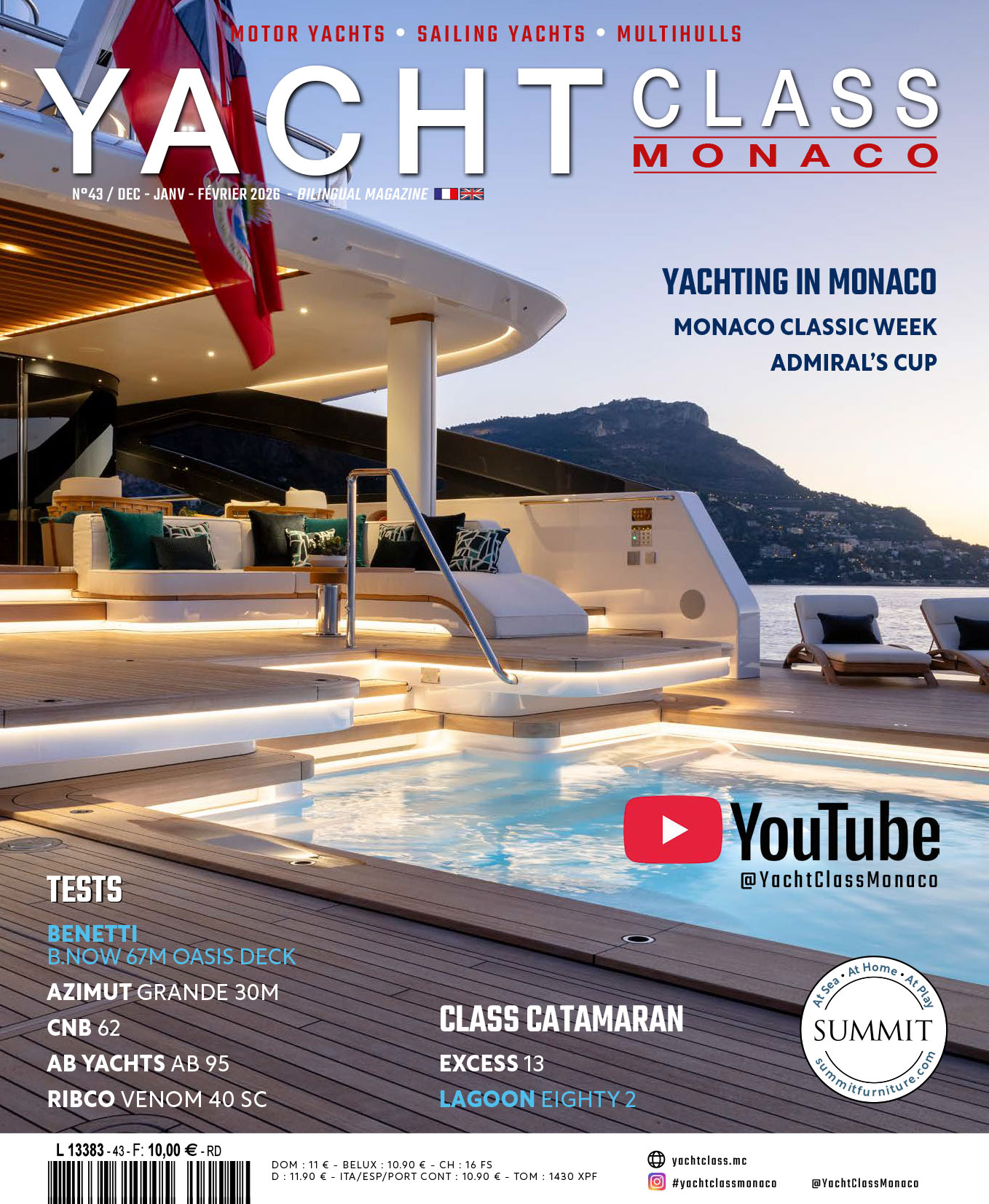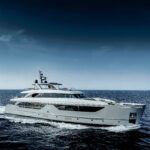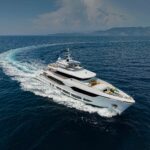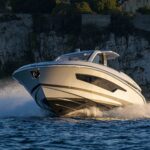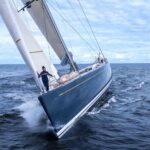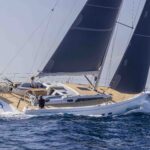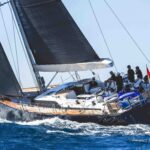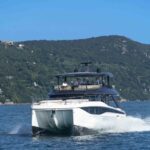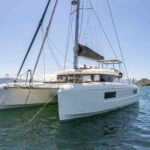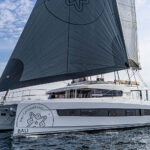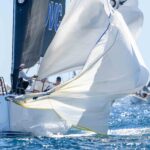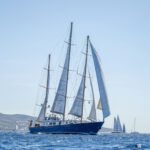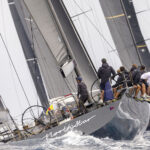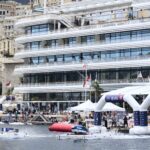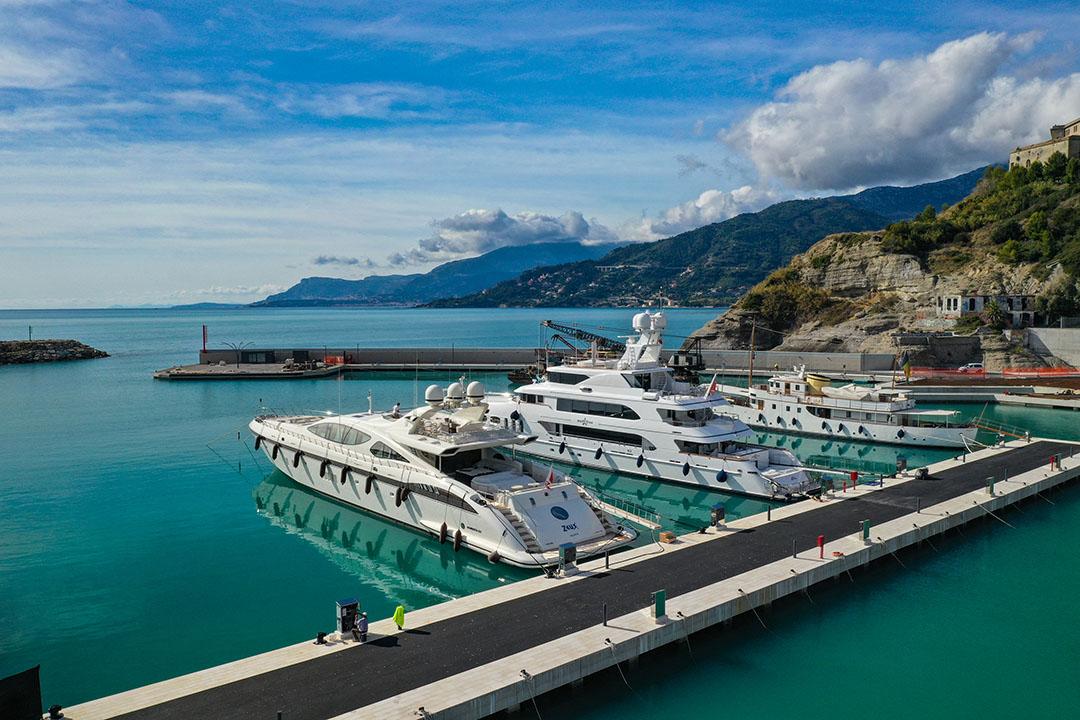Yacht Class n°27 (dec 2021/jan-fev 2022)
Aleco Keusseoglou

After its inauguration on July 2nd 2021, the port of Cala del Forte has experienced its first summer season. We seized this opportunity to take stock of the situation with Aleco Keusseoglou, president of the Société d’Exploitation des Ports de Monaco (SEPM).
Interview réalisée par Jean-Marc Moreno – Photos : SEPM
What is the occupancy rate of Cala del Forte?
The 3e port of Monaco must make itself known and appreciated. For its first summer season, the attendance at Cala del Forte was encouraging, especially in September. During the fortnight around the Monaco Yacht Show, the port was even full.
This first season was not facilitated by the sanitary situation. There was in addition the mooring ban for yachts over 24 metres in the French 300 metre coastal strip, which has entered into force without anticipation of implementation of palliative measures and has led many yachts, chartered or not, to relocate to other destinations.
Moreover, as for many things, it takes more than a snap of the fingers to launch a new port. A transitional ramp-up phase is quite normal.
Let also remember that, in addition to welcoming visiting yachts, the primary reason for the acquisition of this new port is to double the number of berths over 35 metres and thus to meet the demands of Monegasque residents seeking berths on a regular basis for their new yachts.
What arguments do you put forward to attract shipowners?
For both the visiting activity and the regular new yachts, our arguments – which are more than arguments but a reality – are that Cala del Forte is a real extension of our ports in terms of booking management, services and their quality, security guarantee, in a new infrastructure.
One of its main assets, already confirmed during significant weather events, is its good behaviour in terms of protection thanks to its geometry and the profile of its seawalls. In this regard, our commitment to offer irreproachable mooring comfort will lead us, before the next season, to build an additional structure for the west swells.
In addition, a real neighbourhood life is taking shape, with green spaces, shops and professionals with a substantial car park.
Finally, to create continuity with Port Hercules, we have acquired an avant-garde fast shuttle, called Monaco One, which can carry 11 passengers and link the two marinas in less than fifteen minutes.
The SEPM is also positioned on the ports of Rome and Sanremo. This desire to expand and export your expertise well beyond the borders of Monaco, what does it bring to SEPM?
In 2016, in response to the need for additional berths near Monaco, with the consent of the Princely Government, our unique shareholder, we decided to create our subsidiary, called Société Monégasque Internationale Portuaire (SMIP).
Its purpose is to invest abroad in companies in charge of port management and concessions, based on two main development axes. First of all, there is a local strategy, which seeks to increase the capacity of medium and large yachts, by focusing in ports near Monaco. The SMIP’s first project has resulted in the purchase of the concession of Ventimiglia. This approach has also led SMIP to position itself in the Sanremo and Cap d’Ail. Next comes the export of expertise, in terms of port operations, on restructuration projects of emblematic ports, such as Civitavecchia (Rome).
These two lines of development are beneficial to the SEPM’s activities and reputation, the expatriation of its savoir-faire and the development of its expertise.
You spoke at the Monaco Smart & Sustainable Marina Rendezvous, what would you say about this conference?
It seemed natural to participate, to bring our expertise and our vision on how ports should evolve in the age of digitalization with environmental concern at the heart of all actions. There were rich exchanges and speakers of high quality. My conclusion is that we were perfectly in tune with the necessary transition perspective for this industry that has a major impact in many respects.
